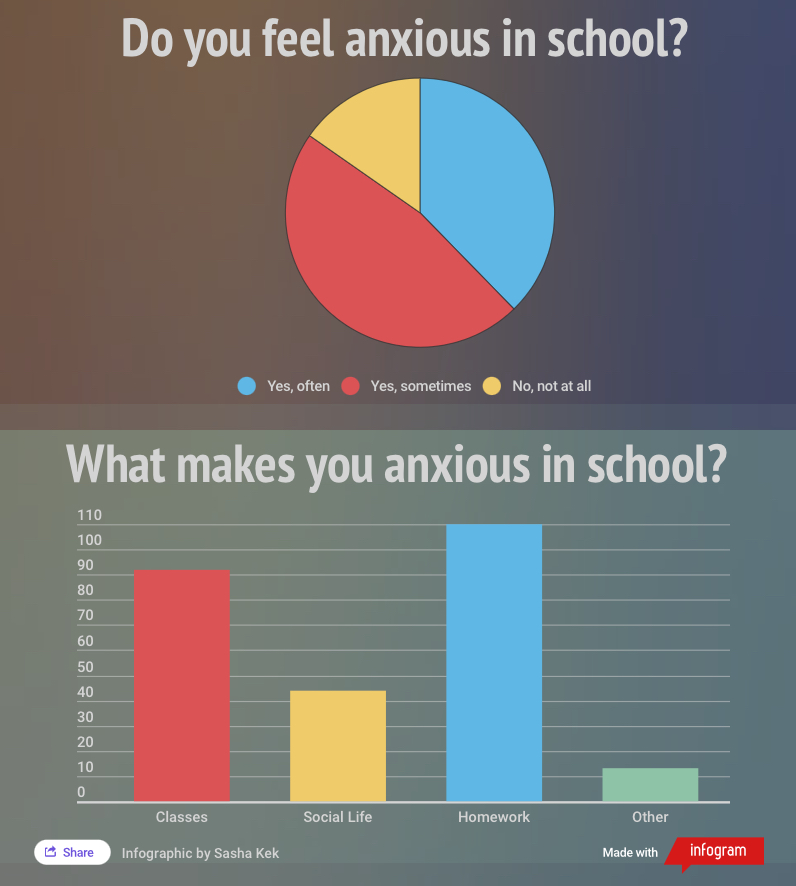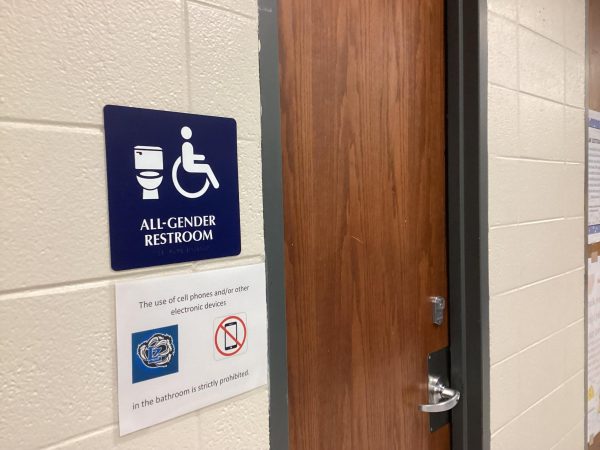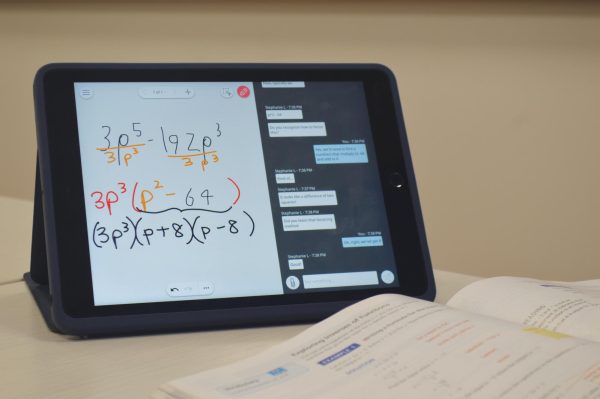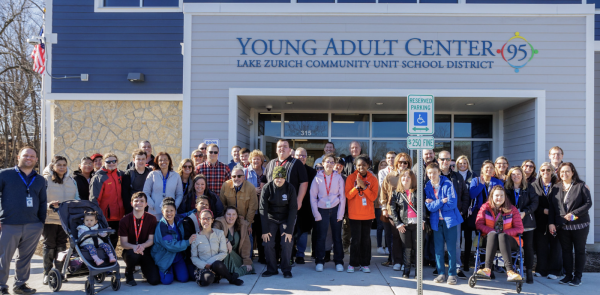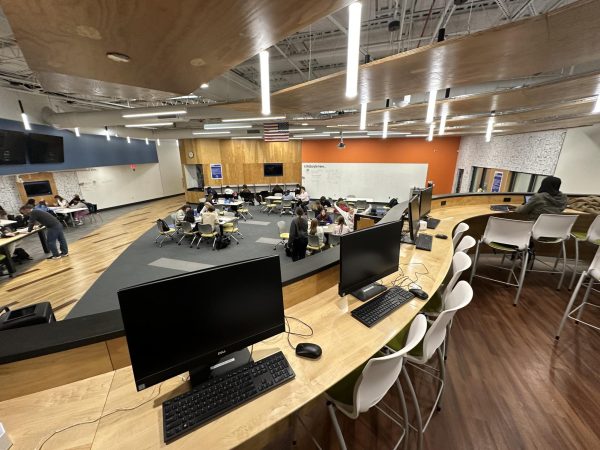School builds calming room for students to process negative emotions
Photo by and infographic by Sasha Kek
With a majority of students feeling anxious in school, the calming room is a supervised place students can go when they need to process their emotions. “For me, it’s a quiet place. It’s just quiet, I can get my work done, and it’s nice to have a place for students to go to,” Michaela Towne, Spanish teacher and calming room supervisor, said. “It doesn’t benefit as much, but it is nice for students if they feel like, ‘Okay, I need to take a break,’ they now have a place to go.”
84.7% of students report they feel anxious at school, according to an October Bear Facts Student Media survey of 334 students. To help students process their emotional wellbeing, the school built a designated room for students, where they can process any negative emotions.
“[The calming room is] a supervised space that we’ve designated for students to process if they’re feeling anxiety or something in class. Since returning to school, and even beforehand, we’ve seen a rise in anxiety and things of that nature, and with that has been an uptick in people going to the bathroom and hiding out, so we wanted to provide a space where people could go and be supervised, and not elope from class,” Pete Nadler, assistant principal of student services, said. “We are capping it at 10 minutes, so if you go down there and you can’t calm yourself, that’s when we’ll refer you to the Student Services office.”
The calming room is located in B119 and is open all periods. Nadler says that due to the increase in anxiety among students, the calming room was a necessary installment to provide a private and supervised space for students to process negative feelings and emotions.
“We saw a need for a supervised space because we have students who get these feelings during class and need to get out rather than going to the bathroom or going to sit in the cafeteria when it’s not their lunch, or going to a place that can lead to some sort of dean intervention,” Nadler said. “We want to support the mental health of this building, especially coming out of a pandemic. We want to make sure that students have what they need, and we saw this as a need.”
And this need is also seen in classrooms. Michaela Towne, Spanish teacher and calming room supervisor, says the need for the calming room “is more so than ever” as she has seen an increase in mental health issues among her students.
“I wouldn’t venture to say how many students need [the calming room], but I definitely feel like I’ve had more social emotional issues with my students in my regular classes, not only this year, but before,” Towne said. “I feel like it’s a good year to pilot something like this, given all that’s been going on and the different stressors students are getting overall.”
To help cope with such stressors, the calming room contains adult coloring books, fidget spinners, and other tactile objects students can use if they “need to get their mind off of something” to calm and relax themselves, according to Towne.
“You can’t use it if you don’t have it, so I think it’s nice to have [the calming room] for those kids who do want to use it, or need to use it, that there does exist a place,” Towne said. “Even if not everybody is going to use it when they’re having a problem, some people will, so to me, that’s an advantage.”
When a problem does arise and a student feels anxious or experiences a negative emotion during class, they can ask their teacher to leave class and go to the calming room, Nadler said.
“It doesn’t necessarily have to be, ‘I want to go to the calming room,’ because that could be stigmatizing saying that aloud, so if a student says they need to go to the counselor’s or the bathroom, then they’ll go [to the calming room] and scan in like in Studio C,” Nadler said. “They’ll check in with the staff member who’s down there, and the staff member keeps a record on how long they’ve been there. The staff member is not there to intervene with the student, but if it gets to about 10 minutes they’ll say, ‘Are you okay to go back to class because you’ve got to go,’ or if the student is distraught in any way, we’ll send down the Student Services and they’ll meet with their counselor or social worker.”
Even though the room is meant to soothe students who experience a negative feeling during the school day, Nadler recognizes there may be a drawback to the room.
“Obviously it could be a congregating space. If a couple of students want to hang out and they coordinate that they’re both going to go to the bathroom at the same time, we don’t want that because that’s not the spirit of [the calming room],” Nadler said. “We don’t want to create a space for kids to ditch class, because most importantly, we’re a school and we want our students in class as much as possible.”
As a calming room supervisor, Towne is responsible for making sure students use the calming room appropriately. But while working there, she suggests the calming room should have other tools to aid students.
“It’s a lot more calming and nice to have the sofa and comfortable chairs than the hard desks, and the lighting and the furniture definitely contribute to making it more relaxing, but after the new furniture was done, there was almost like a white noise from a machine,” Towne said. Maybe, if anything, we need strategies like meditation or breathing. If you feel a certain way, there is a calming app or a guided meditation if kids want to go do that or if they didn’t know what to do [to calm themselves].”
According to the Bear Facts survey, 31.1% of students say they would use the calming room when they are feeling anxious during the school day. But even though more students are utilizing the space, Nadler says his vision for the calming room was a little different.
“My greatest vision was that it wouldn’t be used, that students are doing great and they can be in class, but that’s not the reality. Most of my job revolves around supporting the mental health of students in this building, so my vision is that students in need can go down there, do something as a coping skill to, in the moment, reconcile those feelings within them, and then get back to class,” Nadler said. “Just the realization that it’s okay to have those feelings, it’s okay to go process those feelings, and then it’s okay to go back to class is really the biggest thing; we all have these feelings on some level, and we all cope in different ways, but sitting in class and feeling those anxious feelings could be a bad and scary experience for kids, so we want to at least alleviate that a little bit.”

This is Sasha’s third and final year working with the Bear Facts staff as the LZ Life Editor. Aside from helping Bear Facts run smoothly, you can find...

